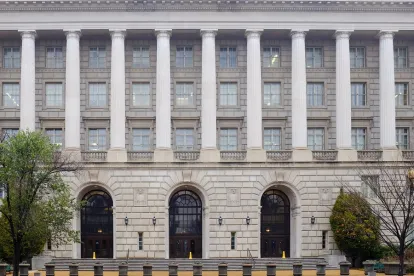When Hurricanes Harvey and Irma made landfall in Texas and Florida, they gave rise not only to widespread property damage, but to a humanitarian disaster as well. The massive storms have left scores dead and thousands homeless in their wake. Many companies operating in Texas and Florida are now searching for ways to help employees adversely affected by the storms.
Recent guidance issued by the Internal Revenue Service (IRS) gives those employers additional options for helping employees affected by Harvey and Irma recover from the unprecedented damage caused by the storms. Like relief provided by the IRS in the aftermath of other disasters, the new guidance permits employers to waive the restrictive rules usually imposed by the Internal Revenue Code (“Code”) on loans and hardship distributions from tax-favored retirement plans. The guidance also permits employers to adopt leave-based donation programs to facilitate contributions to charities assisting victims of the disasters. In addition to the new relief, employers may also make “qualified disaster relief payments” directly to employees under certain circumstances.
Relief for Hurricane-Related Hardship Distribution and Loan Requests
Eligible Participants and Plans. IRS Announcements 2017-11 and 2017-13 permit employers to make hardship distributions or loans from retirement plan assets to help alleviate Harvey- and Irma-related financial needs of employees or former employees whose principal residence or place of employment, as of the applicable date (described below), was located in one of the counties identified for individual aid by the Federal Emergency Management Agency (FEMA). Employers may also make hardship distributions to employees or former employees requesting the funds to assist a spouse, a lineal ascendant or descendant (i.e.,, a child, grandchild, parent, or grandparent), or other dependent whose principal residence or place of employment was located in the affected counties on the applicable dates.
Where can employers find up-to-date information?
The affected counties and the applicable dates for each hurricane are identified on FEMA’s website: Texas (Applicable Date – August 23, 2017)
· Florida (Applicable Date – September 4, 2017)
The IRS relief described in this Alert will apply to any other counties FEMA identifies for individual assistance, effective as of the applicable date, as the full extent of the damages caused by each hurricane becomes clear.
The IRS guidance applies to any plan or contract meeting the requirements of Code Sections 401(a), 403(a), and 403(b) that may permit participants to request loans or hardship distributions. This includes 401(k) plans, 403(b) plans, and certain other defined contribution plans, but excludes defined benefit plans. The IRS relief also applies to Code Section 457(b) plans, to the extent Hurricane Harvey- and Irma-related expenses could be viewed as “unforeseeable emergencies” for hardship distribution purposes.
The relief will apply to hurricane-related loans and hardship distributions made between from the applicable date specified on FEMA’s website (August 23, 2017 for Hurricane Harvey relief in Texas, and September 4, 2017 for Hurricane Irma relief in Florida) through January 31, 2018.
Relaxed Eligibility Requirements and Restrictions for Hardship Distributions. The IRS guidance permits employers to skip certain verification steps an employee would otherwise need to satisfy to receive a hardship distribution from his or her retirement plan. For instance, while employees must normally provide proof they are experiencing an eligible hardship event (through invoices, receipts, bills showing balances, etc.), employers need not require employees to provide evidence they have incurred a financial hardship due to damage caused by Harvey or Irma. Rather, unless an employer has actual knowledge suggesting an employee made a hardship request in bad faith, it may rely on the employee’s representations about the cause and amount of the financial hardship.
In addition, employers may waive the six-month post-distribution contribution restrictions for employees who receive hardship distributions to alleviate a financial need arising from Harvey or Irma without violating the hardship rules.
Administrative Requirements. Despite the relaxed restrictions described in the IRS guidance, certain administrative requirements will still apply, at least for now. For example, plan loans to participants affected by the recent storms will still be subject to the spousal consent rules (if applicable) and must still satisfy the requirements of Code §72(p). Similarly, the maximum amount of any hardship distribution still cannot exceed the participant’s total elective deferrals to the plan and the distribution must still be included in the participant’s gross income (unless it consists solely of designated Roth contributions). Further, for participants under age 59½, hardship distributions for Harvey- and Irma-related expenses will still be subject to the additional 10 percent tax on early distributions. (However, see “Potential Legislative Relief” below for information about potential relief from this additional tax and the loan limits imposed under Code Section 72(p).)
An employer will not, however, be viewed as failing to meet those requirements if the employer: (1) makes a good faith, diligent effort under the circumstances to comply with any administrative requirements imposed by the plan or the Code with respect to Harvey- or Irma-related loan or hardship distribution requests made during the applicable period; and (2) makes a reasonable effort to assemble or collect the required documentation as soon as practicable.
For instance, if a plan requires participants to obtain their spouse’s consent before receiving a loan, a participant who claims her spouse is deceased might normally be required to provide the employer with a death certificate before receiving the loan. However, if the employee was affected by either Harvey or Irma, then under the IRS relief, the plan will not be treated as disqualified if the employer makes a loan to the participant before receiving the certificate, provided the employer makes reasonable efforts to obtain the death certificate as soon as practicable. In addition, the Department of Labor will not treat the employer as having violated its duties under the Employee Retirement Income Security Act of 1974 (ERISA) since it complied with the IRS’ guidance.
Required Plan Amendments. Employers are not required to adopt the relief outlined in the IRS guidance. If an employer elects to make some or all of the relief available, it may immediately begin making plan loans and/or hardship distributions to affected employees and former employees. Employers must adopt any plan amendments necessary to incorporate the relief provided by the IRS guidance by the end of the 2018 plan year (i.e., December 31, 2018 for calendar year plans).
Leave Donation Programs
IRS Notices 2017-48 and 2017-52 provide guidance to employers that have adopted, or may be considering adopting, a leave-based donation program. Leave donation programs provide employees with another means of contributing to disaster relief efforts. Under these programs, employees give up their vacation, sick, or personal leave, and their employer makes a cash payment of equal value to charitable organizations providing relief to victims of the disaster.
Employees cannot claim a charitable deduction with respect to the vacation, sick, or personal leave they donate to the program. However, so long as: (1) the employer makes payments to charitable organizations providing relief for victims of Hurricanes Harvey and Irma; and (2) those payments are made before January 1, 2019, the value of donated vacation, sick, and personal leave will not constitute gross income or wages to the employees. The employer may deduct the cash payments it makes to charitable organizations as business expenses. Employers are not required to partner directly with a specific charitable organization to set up a leave donation program.
Direct Relief Payments to Employees
In addition to the relief described above, employers may assist employees affected by the damage wrought by Hurricanes Harvey and Irma (both of which have been designated as “qualified disasters”) through direct payments for certain sorts of expenses. If those payments constitute “qualified disaster relief payments” under Code Section 139, then they will be excluded from employees’ gross income, and will not be subject to withholding or employment taxes.
Under Code Section 139, “qualified disaster relief payments” may include payments an employer makes to reimburse or pay employees for “reasonable and necessary” personal, family, living, or funeral expenses. In addition, payments to reimburse or pay employees for “reasonable and necessary” expenses for the repair or rehabilitation of a personal residence (including a rented residence) or repair or replacement of the contents of their residence may qualify. Qualified disaster relief payments may not, however, reimburse employees for damages or expenses already compensated by insurance.
Personal, Family and Living Expenses. Personal, family, and living expenses related to a qualified disaster include:
-
Expenses of maintaining a household, such as amounts paid for rent, water, and utilities; and
-
Expenses incurred in traveling away from home (including transportation expenses, meals, and lodging).
While the list of what constitutes personal, family, and living expenses is relatively brief, as a practical matter, employers have broad discretion to determine what personal, family or living expenses may be paid or reimbursed through a qualified disaster relief payment. For instance, under IRS Revenue Ruling 2003-12 (discussed below), an employer’s disaster relief policy may prohibit reimbursement for employee expenses relating to nonessential, luxury or decorative items and services.
Substantiation of Reimbursable Expenses. When enacting Code Section 139, Congress recognized that it might not be practical to ask employees in a disaster situation to account for emergency expenses. As a result, employees do not have to account for their actual expenses in order to receive qualified disaster relief payments and qualify for the exclusion from income for such payments, provided the payments received by the employee are reasonably commensurate with the expenses he or she incurred. Further, employers need not require employees to provide any evidence or documentation to support a reimbursable expense, unless the expense appears to be unreasonable or unnecessary. However, as a best practice, employers should consider obtaining a self-certification from an employee receiving a qualified disaster relief payment that sets forth the expenses covered by the payment (i.e., temporary lodging, meals, home repairs), and requires the employee to certify that the expense is not reimbursable by insurance.
Example of an IRS-Approved Disaster Relief Program
Revenue Ruling 2003-12 provides an example of an acceptable disaster relief program. Under the program, created to assist employees affected by a flood, the employer’s payments were excluded from its employees’ gross income, and therefore, were not subject to federal income, Social Security, Medicare, or Federal Unemployment (FUTA) tax, or any other information reporting requirements.
The employer’s disaster relief program: (1) did not require employees to provide proof of actual expenses to receive disaster relief payments; (2) contained requirements (not detailed in the Revenue Ruling) to ensure that the grant amounts were reasonably expected to be commensurate with the employee’s unreimbursed, reasonable and necessary medical, temporary housing and transportation expenses incurred as a result of the flood; (3) was available to all affected employees regardless of length or type of service; and (4) was not intended to indemnify all flood-related losses or to reimburse the cost of nonessential, luxury or decorative items and services.
Presumably, if an employer adopted a similar disaster relief plan in connection with Hurricane Harvey or Hurricane Irma, the IRS would consider the payments to be exempt under Code Section 139.
Potential Legislative Relief
In addition to the tax relief provided by the IRS, the U.S. House of Representatives is expected to consider legislative relief for individuals affected by Hurricanes Harvey and Irma (and also Hurricane Maria). The legislation, drafted by House Ways and Means Committee Chairman Kevin Brady (R-TX), may be introduced as early as Monday, September 25, 2017.
Under the proposed legislation, affected participants may receive up to $100,000 in retirement plan distributions as “qualified hurricane distributions.” In addition, the proposed legislation would exempt participants who receive qualified hurricane distributions from the 10 percent early distribution tax that would normally apply to participants who are under age 59 ½.
Qualified hurricane distributions would still be treated as income to the recipient, but could, unless the individual elects otherwise, be included ratably over the 3-year period beginning with the year in which he or she received the distribution. In addition, the proposed legislation would allow an individual who receives a qualified hurricane distribution to, at any time within three years following the distribution, repay it to an eligible retirement plan. The repayments would be treated as direct rollovers into the plan.
The proposed legislation would increase the limit on plan loans from $50,000 to $100,000 for loans to individuals affected by Hurricanes Harvey, Irma, and Maria made between the legislation’s enactment and December 31, 2018. It would also permit hurricane-affected individuals with outstanding plan loans to delay the repayment of those loans for one year.
Any plan amendments needed to implement the changes permitted by the proposed legislation must be adopted by the last day of the plan’s 2019 plan year.
Employers affected by Harvey, Irma, and Maria would also benefit from the proposed legislation, which would allow an “employee retention” tax credit of 40 percent of qualified wages, up to $6,000. Any employer engaged in business in a hurricane disaster zone, on the applicable date, whose business was rendered inoperable because of the storms would be eligible for the tax credit.
While this relief would be welcomed by hurricane-affected employers and employees alike, the proposed legislation must pass both the House and the Senate and be signed by the president before its provisions can become law.





 />i
/>i
